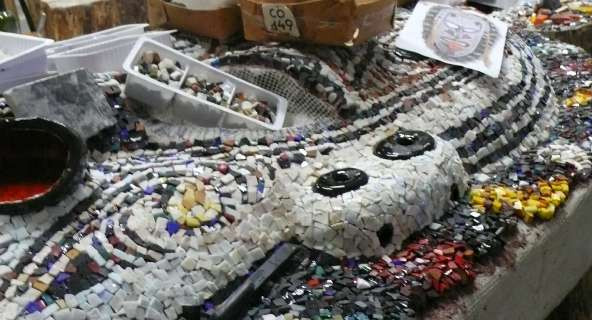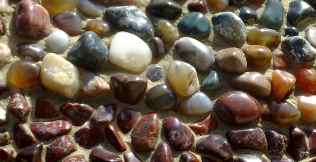- Home
- Gallery and Artists
- About BAMM
- Members Area
- Resources
- Prompts from the Pros
- Prompts from the Pros - Sophie Robins
- Prompts from the Pros - Rachel Davies - Interwoven
- Prompts from the Pros - Lawrence Payne
- Prompts from the Pros - Alex McHallam
- Prompts from the Pros 2 - Escape with Bonnie Fitzgerald
- PftP2 Francesca Busca Eco Artivism - Fabric
- PftP2 Francesca Busca Eco Artivism - Metal
- Prompts from the Pros 2 - Francesca Busca Eco Artivism - Paper
- Prompts from the Pros 2 - Francesca Busca Eco Artivism Plastic
- Prompts from the Pros 2 - Joanna Kessel
- Prompts from the Pros - Helen Miles
- Prompts from the Pros - Julie Sperling
- Prompts from the Pros - Kelley Knickerbocker
- Prompts from the Pros - Marian Shapiro
- Prompts from the Pros - Rachel Sager
- Materials & Techniques
- History of mosaic
- BAMM Talks and Demos
- Useful links and groups
- Suppliers
- Prompts from the Pros
- Workshops/Exhibitions
- News
- Supplier’s
British Association for Modern Mosaic
Resources: Materials and techniques

The Building Blocks of Mosaic
Contemporary mosaic knows no boundaries in it's search for the right material, but traditionally a base core of materials were developed that are still at the centre of this varied and unique art.
 Pebbles
Pebbles
The original mosaic material dating back to the earliest examples of floor mosaics were pebbles. Pebbles are extremely durable and have been used to great effect to create pebble mosaics.
Sea Shells
Sea shell can be found in the earliest mosaics and has been used for many grotto creations. This delicate material brings it's own pattern and texture to a mosaic.
Stone and Marble
Various stones and marbles have been used in mosaic art since the Classical era. Stone mosaics can be polished to a mirror finish or left rough. Many contemporary mosaic artists use stone for it's strong texture, often deliberately setting the stone at an angle to increase the texture.
 Glass Smalti
Glass Smalti
Glass Smalti is a specially produced hand made opaque glass for mosaic artists. This is the material of the great Byzantine mosaics, such as those at St Marks in Venice. Produced as plates and then usually cut down into smaller blocks these glass tesserae come in an amazing range of colours and give a mosaic a unique texture and light reflective quality. This unique glass smalti is also produced in gold, 24 carat leaf is fused between two pieces of plain or coloured glass to create a range of gold effects.
Vitreous Glass and Art Glass
Machine made glass is also common in mosaic artworks, whether it is the vitreous glass tile, often seen in swimming pools or cut or broken pieces of art glass in it's myriad of colours and forms. Mirrored and irradized glasses are also used to add a shimmering quality.
Unglazed Ceramic/ Porcelain
Unglazed ceramic or Porcelain is a tough modern material ideally suited to floor mosaics though it can also be used elsewhere. This material is frost proof, slip resistant and strong.
Glazed Ceramic
Much of glazed ceramic is not frost proof so is generally restricted to interior mosaics. It's bright shinny colours are often used to create bold mosaics.
Pique Assiette / picassiette
The creation of mosaics from broken china is known as picassiette. A wide range of broken ceramic objects are used each piece bringing with it it's own history to the finished work.
Found Objects
Found objects also often bring their own special history to a mosaic, these generally fall into two categories, man made or natural.
Found objects from the natural world include a wide range of items such as fossils, precious and semi precious stones including such treasures as Pyrite, Chalcedony, Aragonite, Amber, Agate and Turquoise.
Man made objects used in mosaic are equally too many to mention but have included toys, pipes, archaeological finds, nails, washers, bottles, remembrance objects and personal items.
Light and physicality
The hidden material in mosaic art is light itself. The reflection of light and the casting of shadow are vital parts of the mosaic artists palette. The effects of light on the material are combined with the sheer physicality of pressing objects into cement or glue, the direct relation to labour and our hands. These are an essential part of mosaics magic.
 How mosaics are made
How mosaics are made
The techniques for creating mosaics fall into two categories, the direct techniques and the Indirect Techniques.
The Direct techniques
As it's name suggests the primary method of constructing mosaics is the simple placing of each piece directly into a setting bed (adhesive) at the final location for the mosaic, so if you are creating a mosaic floor you are on your hands and knees putting each stone into the cement one at a time.
There are a number of variations in the technique but it's essence is in that direct placement of the tesserae.
Today the technique is widely used for creating mosaic panels which hang like pictures on the wall. It is also used for many wall mosaics. It's main advantage is in the ability to control directly the end result, taking account of the actual light and setting the pieces to give texture and a direct feel.
The Indirect Techniques
Of course there are many circumstances where it is not practical to be on site setting a mosaic so a number of 'Indirect' techniques have been developed. These enable the mosaic maker to create the mosaic in a studio, away from the final destination. Installation on site then becomes a much simpler and less disruptive operation, completed after the mosaic has been constructed.
 The Indirect techniques rely on an intermediate support for the mosaic. This can be in the form of: paper, where the mosaic is glued temporarily to paper before being installed on site and the paper removed; mesh, where the mosaic is glued to a mess backing and the whole thing bedded on site when completed; panels, where the mosaic is formed into panel sections off site and then assembled on site.
The Indirect techniques rely on an intermediate support for the mosaic. This can be in the form of: paper, where the mosaic is glued temporarily to paper before being installed on site and the paper removed; mesh, where the mosaic is glued to a mess backing and the whole thing bedded on site when completed; panels, where the mosaic is formed into panel sections off site and then assembled on site.
